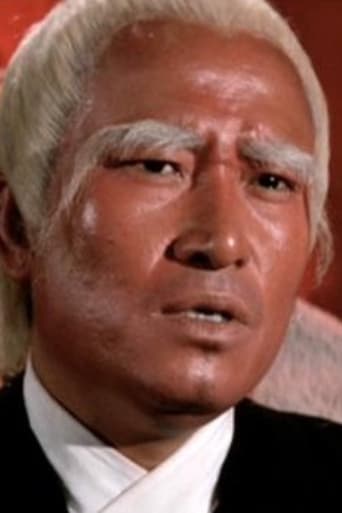Plustown
A lot of perfectly good film show their cards early, establish a unique premise and let the audience explore a topic at a leisurely pace, without much in terms of surprise. this film is not one of those films.
Brian Camp
THE FASTEST SWORD (1968) is not like other Shaw Bros. swordplay movies. The protagonist goes on a journey that takes him in quite a different direction than swordsmen in Hong Kong movies usually went. After a swordfight under the credits in which the protagonist, Ding Menghao, the "Fastest Sword" of the title, dispatches three challengers, a hairy, 80-year-old monk who witnessed the fight proceeds to bait Ding. If the monk, armed only with a long metal smoking pipe, wins a bout with him, then Ding must agree to serve as his apprentice for two years. The monk wins with a deft, unexpected move, and Ding is soon stuck in an old temple, at first meditating, then copying scriptures, and finally ordered to sculpt something out of a boulder within six months. He crafts a creditable Buddha and the monk comes back and tells him to make something smaller out of it during the next six months. He makes a statue of a monk with an upraised palm and when the monk comes back, he orders something still smaller within the next six months. Finally, the monk is satisfied with the result and tells Ding he has great talent as a mason and sends him on his way.After some more travels--and more swordfights--Ding decides to forego fighting and winds up in a remote village under an assumed name working as a stone mason. Unfortunately, as usually happens in this kind of tale, his past catches up with him and he eventually faces a persistent challenger, Qiu Xiying, the "fastest sword in the north," who's chomping at the bit to have a duel with Ding, "the fastest sword in the south." But, despite an intervening attack by bandits, Ding does manage to stick to his new-found principles for as long as possible.The final bout between the rival "fastest swords" is filmed partly in slow motion. The fight staging is not terribly intricate, particularly in the big battle with bandits who attack the town at the midway point, but the characters are strong enough to keep things compelling and the life of the small town where the hero settles is presented with some interesting detail, particularly in the way rumors are shown to spread.The film has no familiar cast names nor have I heard of the director or any of the crew before. I'm guessing this was made in Taiwan with an all or predominantly Taiwanese cast and crew. The locations look like Taiwan and the outdoor sets look different from the usual Shaw backlots. Was it an independent production picked up by Shaw Bros. after the fact? Or a Shaw-financed production made in Taiwan? The top-billed star is Chu Ching, a moderately attractive actress in a supporting role as the daughter of the richest man in the town where Ding settles down. Lu Ping, reportedly a top star in Taiwan, plays Ding, while Kao Feng plays Qiu, the rival swordsman.The DVD case insists this film is a variation on Henry King's classic western, THE GUNFIGHTER (1950), which starred Gregory Peck, but I find it to be much more closely modeled on Russell Rouse's THE FASTEST GUN ALIVE (1956), starring Glenn Ford.
Chung Mo
Pan Lia is one of the Shaw directors who is only now coming to notice in the West. He had a limited output of films but he shows a sure hand as well as a distinctive style that might be a surprise to people used to the cruder films that came out of the Shaw studios later.An excellent yet ruthless swordsman is bested by an 80 year old monk with a smoking pipe. Becoming the monk's servant, the swordsman spends three years in an isolated temple attempting to surmount tasks presented by the monk. Afterwards he returns to life in the outside world but his past reputation as the best sword-fighter in southern China leads to endless challenges. He attempts to give up the life of a martial hero by becoming a stonecutter but new conflict isn't far.The highlight of this film is the character development that usually lacking in this sort of film. The actors are very good and there is a restraint from theatrical acting. The fights are all shot in close medium shots with time spent showing the tension before any actual contact which actually works very well. Don't expect the martial precision of later films or the cartoonish action. The director is better known as the writer of some early Jacky Chan films but I was surprised by the assured direction he shows here. I will be looking out for more of his films. Recommended.
zzmale
The actual literal translation of this movie is: the number one sword in the world.This movie actually does not belong here because it is not made in China, but made in Hong Kong, when Hong Kong was still under the British rule. Considering the year this movie was made, in 1968, during the Cultural Revolution, one could imagine the fate of the film crew: they would certainly be jailed and sent to labor camp, if not struggled to death by the Red Guards first.The movie is based on one of the popular martial arts novels written earlier.





